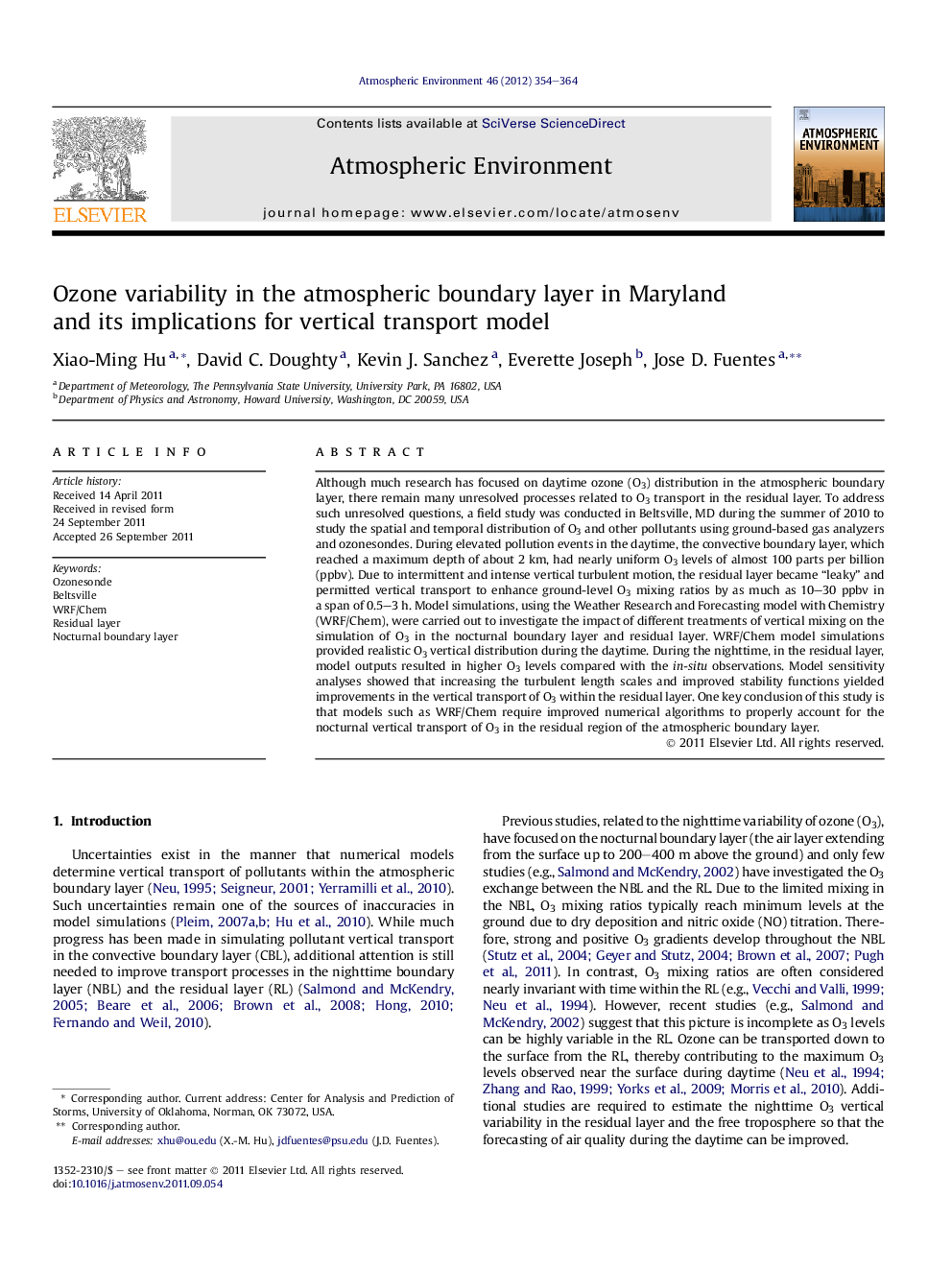| کد مقاله | کد نشریه | سال انتشار | مقاله انگلیسی | نسخه تمام متن |
|---|---|---|---|---|
| 4439271 | 1620425 | 2012 | 11 صفحه PDF | دانلود رایگان |

Although much research has focused on daytime ozone (O3) distribution in the atmospheric boundary layer, there remain many unresolved processes related to O3 transport in the residual layer. To address such unresolved questions, a field study was conducted in Beltsville, MD during the summer of 2010 to study the spatial and temporal distribution of O3 and other pollutants using ground-based gas analyzers and ozonesondes. During elevated pollution events in the daytime, the convective boundary layer, which reached a maximum depth of about 2 km, had nearly uniform O3 levels of almost 100 parts per billion (ppbv). Due to intermittent and intense vertical turbulent motion, the residual layer became “leaky” and permitted vertical transport to enhance ground-level O3 mixing ratios by as much as 10–30 ppbv in a span of 0.5–3 h. Model simulations, using the Weather Research and Forecasting model with Chemistry (WRF/Chem), were carried out to investigate the impact of different treatments of vertical mixing on the simulation of O3 in the nocturnal boundary layer and residual layer. WRF/Chem model simulations provided realistic O3 vertical distribution during the daytime. During the nighttime, in the residual layer, model outputs resulted in higher O3 levels compared with the in-situ observations. Model sensitivity analyses showed that increasing the turbulent length scales and improved stability functions yielded improvements in the vertical transport of O3 within the residual layer. One key conclusion of this study is that models such as WRF/Chem require improved numerical algorithms to properly account for the nocturnal vertical transport of O3 in the residual region of the atmospheric boundary layer.
► At times, the residual layer became leaky and permitted vertical transport to enhance surface O3.
► Ozone in the residual layer is highly variable.
► The current implementation of the ACM2 PBL scheme in WRF/Chem does not properly simulate the mixing of pollutants.
► Increasing the asymptotic length and using “long-tails” stability function improved the nighttime simulation.
Journal: Atmospheric Environment - Volume 46, January 2012, Pages 354–364